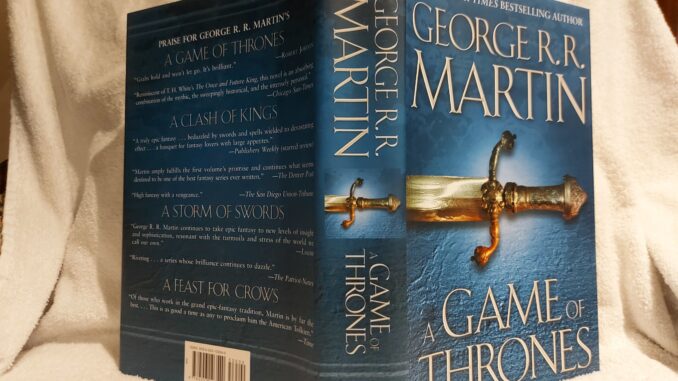
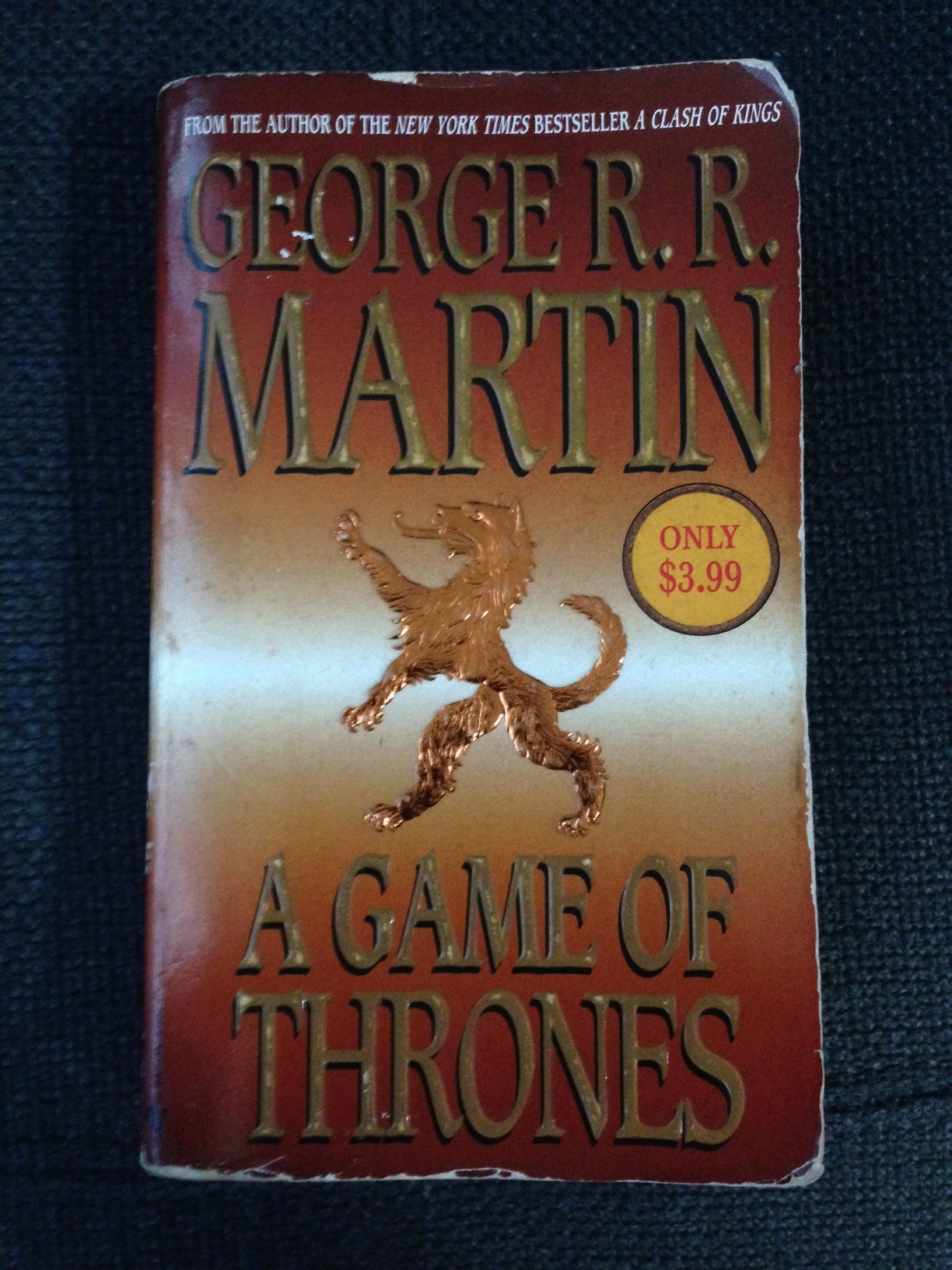
Should you buy this book? Yes. Or the whole set, if you’re feeling lucky!
Should you borrow this book? Of course, but it’s going to get worn out.
“A Game of Thrones” by George R R Martin is the first book in “A Song of Ice and Fire” series (which has five books to its name now, and possibly three more to go). It revolves around the struggle among the Seven Kingdoms for the Iron Throne, all of whom are blissfully unaware of the ice zombies and dragon spawn who are headed their way (the eponymous ice and fire, so to speak).
“A Game of Thrones” is a pretty hefty tome for a first book. Of course, it has since spawned the popular HBO series, “Game of Thrones,” and lots of merchandise. But before it became popular, it still garnered many awards (and sales I hope), and a Dungeons & Dragons campaign!
To be honest, I wasn’t too impressed upon opening it, and was rather put off by the daunting length of the book. If you threw it at someone, you could do a fair bit of damage. Fortunately, I’d like to say that reading this paid off, and I’m on to the next four books in the series (which might take me a year or some such).
Disclaimer: I’m a casual fan of the show, so I’ve entered this book with preconceived notions of what all the characters look like. Has this contributed to my enjoyment of the book? Definitely. But even without it, I’ve constructed, in my own head, images of characters I’ve kind of forgotten about in the series, which speaks to the evocative writing in the novel.
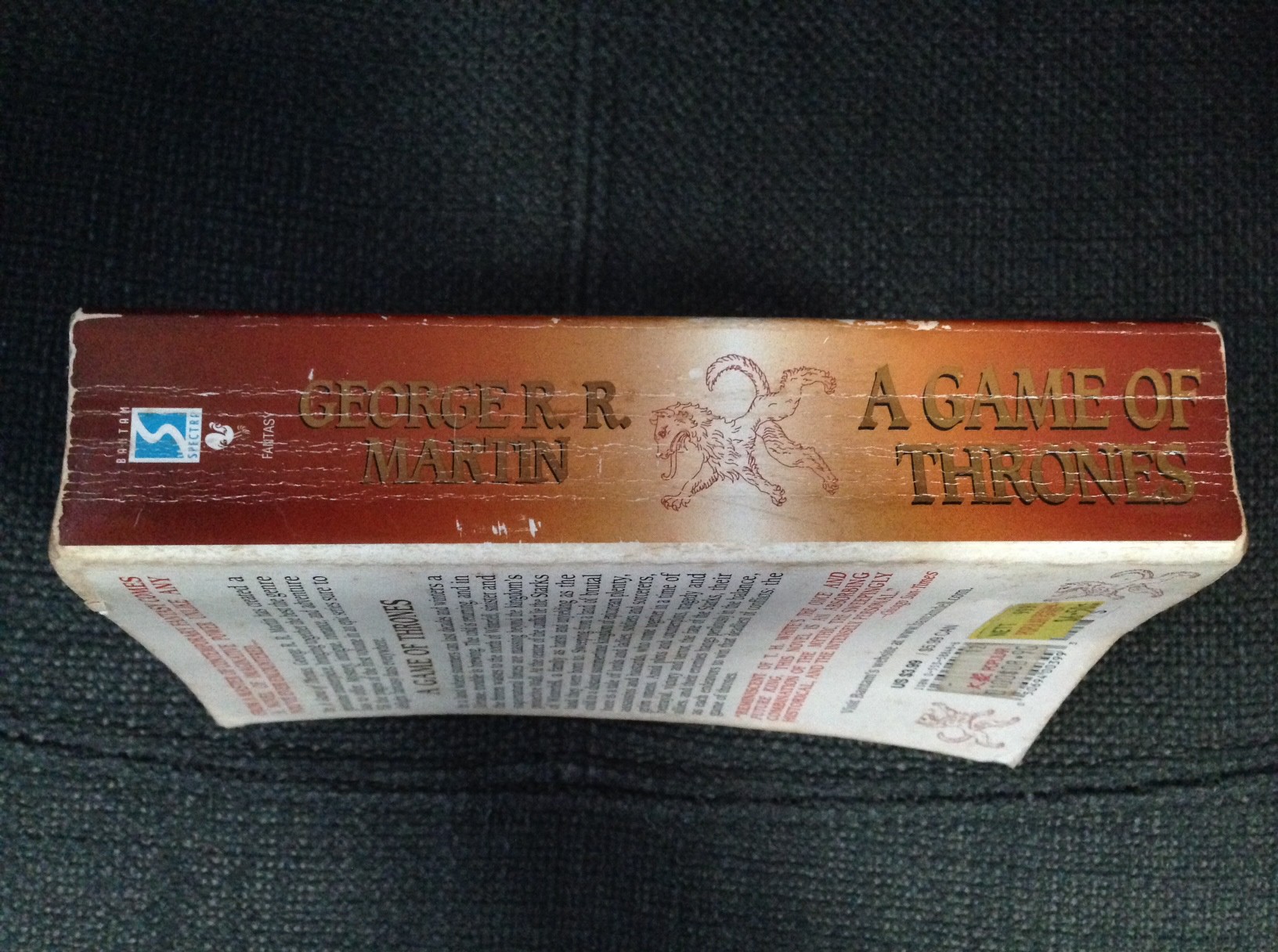
As an Amazon Associate I get commissions for purchases made through links in this post.
So why would I ask you to read “A Game of Thrones?”
Complex characterisation
I’m rather impressed by the depth of characterisation in the novel. There are many, many characters in this sprawling story, and it’s easy to forget who’s who, and more importantly, their motivations. However, no matter how many times we switch between the characters, it takes no more than half a page to be reminded of what drives them. Even more impressive is how deep each character’s motivations run – not only are they distinct, but their personalities are layered and taxed by the situations they encounter. This is good writing, but at 807 pages, it better be.
Varied perspectives
This is especially obvious when it comes to Cersei Lannister (which I’ll come to in a bit), but she’s described very differently and addressed in various ways, depending on who the chapter has decided to focus the character on. It’s more subtle between adults, but when it comes to depicting the perspective of a child, Martin has it down pat. It’s also a clever way to highlight the innocence of the children, and remark to us that the young are the ones who truly bear the cost of war.
Logical but unpredictable plot
Despite the twists in the tale, the stories are properly set up when you think about it. Surprises abound, for sure, but they are warranted and grounded in character. Characters should push the plot forward, not the other way around, and that’s what makes “A Game of Thrones” a character-drive tale.
Cersei Lannister is awesome
Even more so than the show. Because you can see her thought processes and emotions more clearly in prose, it makes Cersei seem all the more vicious, cunning, and yet vulnerable, in a way. It’s this juxtaposition of weakness and power that humanises Cersei, and amplifies her deadliness. And of course, the lengths she will go to, when it comes to achieving her devious ends.
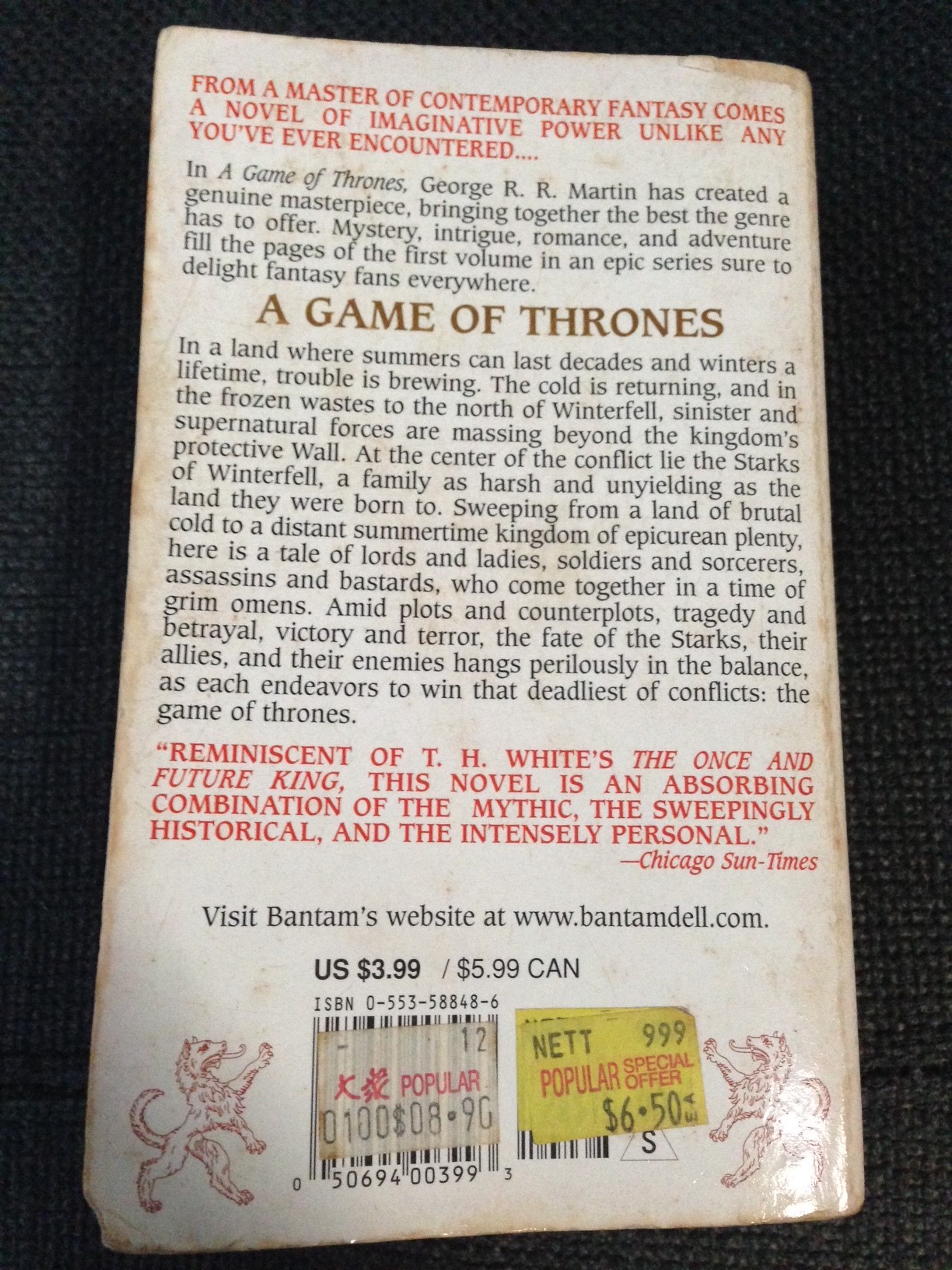
I won’t quite say that this was a perfect novel, though. Some flaws were:
Purple prose
The descriptions can get flowery and overdone, specially in the first quarter of the book. And while I appreciate the touch of world building in the repeated mentions of “Valyrian steel,” the fact remains that I thought it was a pretentious way of shutting out less casual fans until the actual mention of Valyria proved otherwise. You have to be ready for the lavishly described scenes, which can be quite barfworthy at the beginning. Fortunately, it eases off once the characters come into play.
Length
I won’t say that the sheer length unnecessary, but some of the setups and plot points don’t get resolved, and aren’t going to until the next book or even later. Why not shift these parts of the story to the later books (like the Wall), where it will help future novels stand alone as complete stories by themselves?
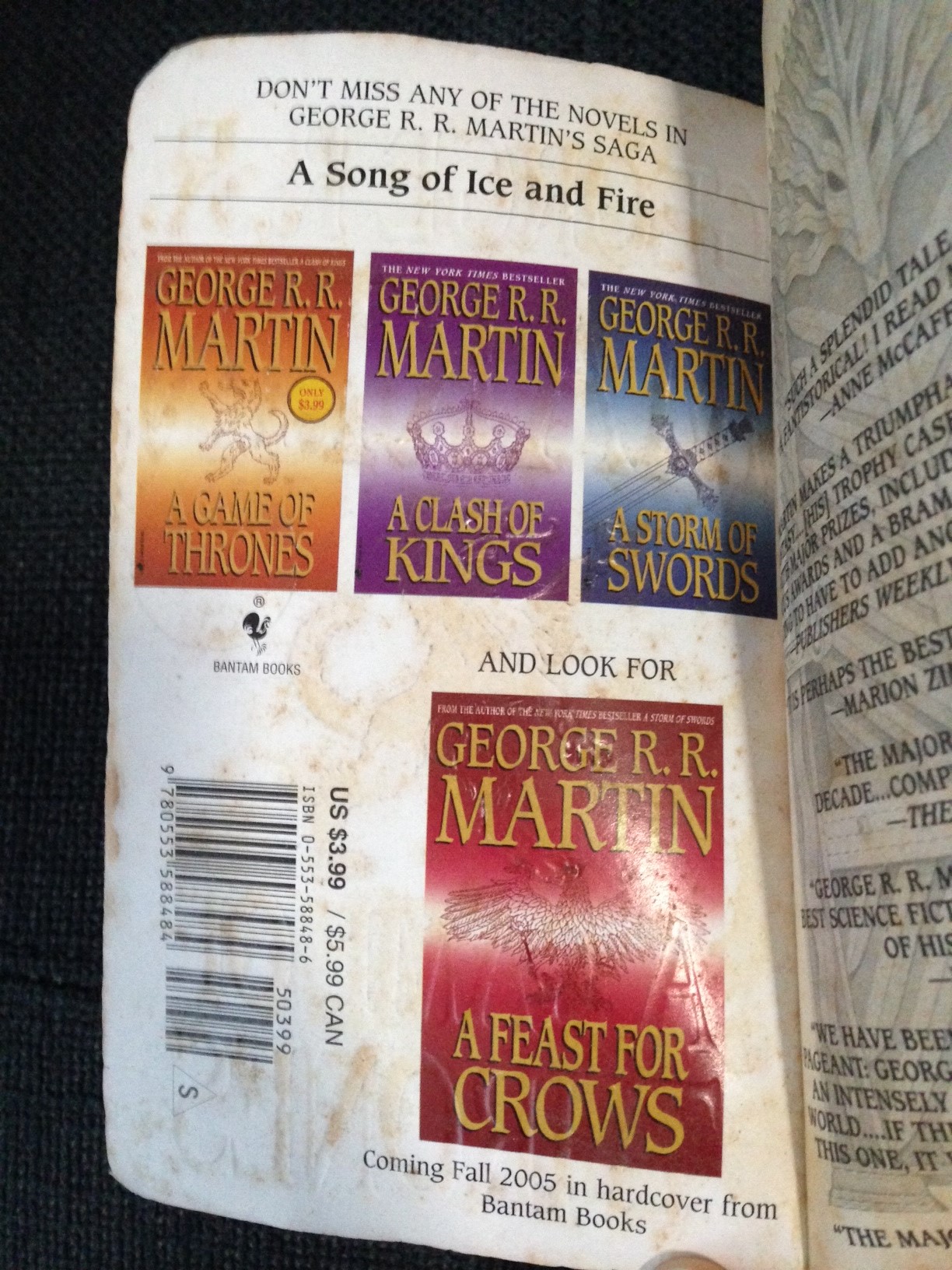
“A Game of Thrones” is probably one of the more readable fantasy fiction novels (as compared to say, Lord of the Rings, or R A Salvator novels), and given that there’s a TV series, you’ll find no lack of friends to talk to about it. What it does best is to invest your emotions in the fate of the characters – no mean feat given the gigantic cast (that will only grow larger) presented.
Right on! I appreciate you giving respects to Cersei Lannister, who I feel is often unappreciated as a character. I don’t know if I am as fond of her character as you are, but she is great. A huge bundle of flaws and ambition and power.